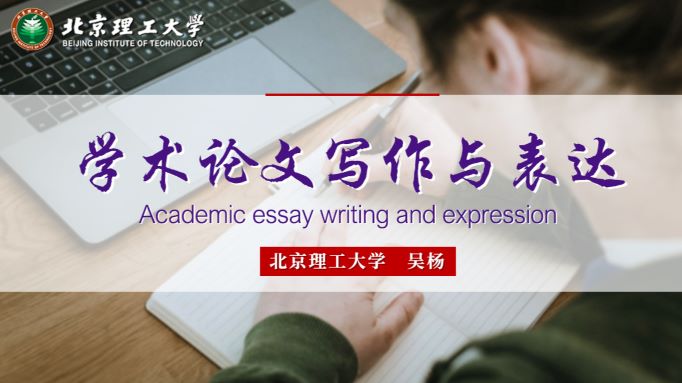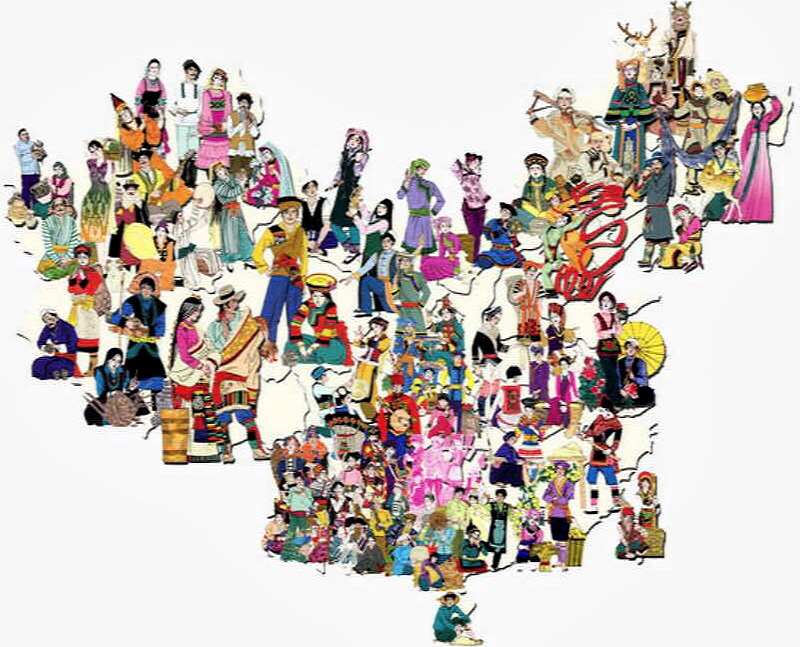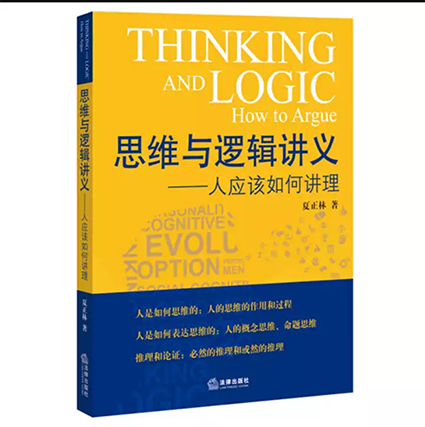
当前课程知识点:新媒体英语 > Unit 3 学习新风貌 > 移动学习 6 Explanation of the Text > 6 Explanation of the Text
移动学习6-课堂版Explanation of the Text.docx---点此下载文件
建议用电脑下载附件使用
查看单词注释的方法:
1、鼠标放在红色单词的上标处,显示尾注内容。
2、双击上标,光标跳至尾注。在尾注处,双击尾注序号,跳至文档序号处。
Mobile Learning: No Longer About the Technology, but About the Learning
Let’s start with the blog’s ending: A transition[i], quietly but most assuredly[ii], has occurred[iii]:
Today, in 2016, discussions under the heading “mobile learning” are becoming more about how “all-the-time, everywhere learning” can be supported with “mobile” technology.
Yesterday, in 2010, discussions about “mobile learning” were about what technology — what devices, what apps — should be used in the classroom. The change in what mobile learning means isn’t just academic quibbles[iv]; rather, the change in what mobile learning means has huge pedagogical implications[v]. In 2010, Apple begat[vi] the iPad, a 9.7-inch-screened, lightweight, flat[vii], touch-enabled[viii], tablet and it was an overnight[ix] commercial[x] success. For adults, with briefcases[xi] and big purses, iPads were “mobile” devices. But, in the classroom, at the end of the period of using the iPads, students put them back into the charging cart[xii] — just about what they did with laptops[xiii].
But, what differentiated[xiv] the iPads from the laptops in K-12[xv] was the software: iPads ran “apps” — lightweight, single purpose, typically free, easy to use software — not “applications” — multi-purpose, not typically free, not particularly easy to use, software. And, since the “apps” were native — that is, an app only ran on an iOS device or only ran on an Android device (yes, there were about four or five non-iOS tablets in K-12 classrooms) — the iPad/Android apps weren’t available[xvi] to the Windows/Mac laptops.
To explore[xvii] the use of predominantly[xviii] iPad technology in K-12, sessions[xix] on “mobile devices” sprang up[xx] at conferences[xxi] in 2011 and 2012. In 2011 and 2012, the Horizon report included a section on “Mobile Devices and Apps.”
But — aha! — in 2013 the Horizon report dropped[xxii] the section on “Mobile Devices and Apps” and included a section on “Mobile Learning.” The transition was beginning! Why 2013? According to a Wall Street Journal article, Chromebooks came onto[xxiii] the scene in 2013 like gangbusters[xxiv].
“Chromebooks’ share of the K-12 market for tablets and laptops exploded[xxv] from just 1 percent in 2012 to 19 percent in 2013.” What’s a Chromebook? Like the iPad, it is lightweight, but like a laptop, it has an attached[xxvi] keyboard. Is it a mobile device? It doesn’t matter, Chromebooks are K-12’s new shiny object[xxvii] — and here’s why:
In our opinion, a major failing of the iPad in the K-12 classroom was the lack of easy access to “student residue[xxviii].” There was little information available to the teachers after the students played an iPad game, and whatever information there was, it wasn’t easily accessible, e.g., a teacher would need to go to that student’s iPad or visit a website, log in an account[xxix], etc. Way too time consuming[xxx]!
In contrast[xxxi], Google understood that software, specific to K-12, was needed to make the hardware truly usable by teachers. Along with the Chromebooks came Google Apps for Education and the Google Classroom, a CMS (classroom management system). While calling the Google Docs Editor (Google Sheets, etc.) an “app” is, ahem, stretching[xxxii] the definition of the term “app,” the linkage[xxxiii] of those “apps” to the Google Drive storage[xxxiv] and to its Classroom make it easy for a teacher to access “student residue,” i.e., the files the students create (or co-create).
(Yes, in 2016, Apple announced iOS 9.3 that makes it easier for teachers — and IT administrators — to create student accounts on a device, and even patched[xxxv] it quick to run on iPads 2’s — but making student artifacts[xxxvi] easy to access? Maybe in the next version …)
So, in 2016, what is “mobile learning” where more than 50 percent of the devices sold into K-12 are laptop-like Chromebooks?
At the 2016 ISTE Conference, at sessions as diverse[xxxvii] as “Mobile Learning in Teacher Education” and “Mobile Learning Playground,” the following devices were permitted to be used: “Laptop: Chromebook, PC, Mac; Tablet: Android, iOS, Windows.”
Sounds like the kitchen sink[xxxviii] of devices; laptops are now included in “mobile learning” sessions!
Let’s end where we started: “Mobile learning” is about learning first and foremost[xxxix], and about accommodating[xl] learning wherever and whenever a learner — teacher or student — is engaging in learning. Mobile learning recognizes that learning doesn’t just happen in the computer lab full of desktop (or laptop) computers; learning happens all-the-time, everywhere. Indeed, as we move from 1-to-1 — every student has a computer — to 1-to-many — where every student has multiple computers — having a computer available to support learning whenever and wherever is now quite possible!
| 移动学习:从技术向学习的过渡
让我们从博客的结尾开始:一个悄悄发生的变化确实已经发生了:
今天,在2016年,在“移动学习”标题下的讨论越来越多地涉及如何通过“移动”技术支持“随时随地学习”。
而在2010年,有关“移动学习”的讨论是关于在教室中应使用什么技术(什么设备和什么应用程序)。 移动学习的变化不再仅仅是学术上的小问题,相反,移动学习方式的改变意味着对教学方式的巨大影响。 2010年,苹果公司推出了9.7英寸的平板电脑iPad,轻巧、平板,而且支持触屏,一夜之间便取得了商业上的成功。对于携带公文包和大钱包的成年人而言,iPad就是“移动”设备。但是,在教室里,用完iPad的学生会将它们放回充电车中——他们也是这样使用笔记本电脑的。
但是,iPad与K-12教育中使用的笔记本电脑的区别在于软件:iPad运行的是“app”——即轻量级的,目的单一的,通常免费的,易于使用的软件;而非“application”——多功能的,通常不是免费的,不是特别易于使用的软件。而且,由于“apps”是本地的,也就是说,一个app只能在iOS设备上运行,或者只能在Android设备上运行(没错,在K-12教室中大约有四到五个非iOS平板电脑),因此iPad / Android的“app”不适用于Windows / Mac笔记本电脑。
为了探索在K-12中主要应用iPad开展教学的可能,2011年和2012年的大会特设了有关“移动设备”的分组讨论。在Horizon的2011年和2012年的报告中,包括了“移动设备和APP”部分。
但是——哇!——在2013年,Horizon报告又删除了“移动设备和App”部分,取而代之的是 “移动学习”部分。转变开始了!为什么发生2013年?《华尔街日报》的一篇文章认为,原因是Chromebook在2013年气势汹汹地进入了计算机市场。
“Chromebook在K-12平板电脑和笔记本电脑市场中的份额从2012年的1%激增至2013年的19%。” 什么是Chromebook?像iPad一样,它很轻便,但是像笔记本电脑一样,它还带有键盘。那它还算是移动设备吗?这并不重要了,因为Chromebook成为了K-12的新宠——原因如下:
我们认为,iPad在K-12教室中的主要失败之处在于缺乏轻松获取“学生遗留信息”的能力。在学生玩完iPad游戏之后,教师几乎获取不了什么可用的信息,就算有信息,也很难获得。例如,老师需要找到该学生的iPad或访问网站,接着进行登录帐户等一系列操作。这太浪费时间了!
相比之下,谷歌认识到专用于K-12的软件需要做到能帮助教师真正使用硬件。除Chromebook之外,还有应用于教育的Google Apps和CMS(教室管理系统)Google Classroom。在打开Google文档编辑器(例如Google表格等)时,“app”不仅仅是app,这些“app”与Google云端硬盘存储空间及其“课堂”的链接使操作变得简单,让教师能轻松访问“学生遗留信息”,即学生创建(或共同创建)的文件。
(是的,Apple在2016年发布了iOS 9.3,该版本使教师(和IT管理员)可以更轻松地在设备上创建学生帐户,甚至可以对其进行修改以便在iPad 2上快速运行,但能不能轻松访问学生的信息和文件?也许要等到下一个版本了...)
2016年,K-12购入的教育设备中有50%以上都是笔记本电脑式的Chromebook。那什么又是“移动学习”呢?
在2016年ISTE大会上,在“教师教育中的移动学习”和“移动学习场”等不同的分论坛上允许使用以下设备:“笔记本电脑:Chromebook,PC,Mac;平板电脑:Android,iOS,Windows。”
这听起来像是电子设备厨房水槽(大乱炖);笔记本电脑现已被纳入“移动学习”会议中了!
让我们在结尾回到开始的问题:“移动学习”首先指的是学习,并且要在学习者(老师或学生)参与学习的任何时间和地点进行适应性学习。移动学习认识到学习不仅发生在摆满台式机(或笔记本电脑)的计算机实验室中;每时每刻都可以学习。的确,随着我们从1对1(每个学生都有一台计算机)到1对多(每个学生都有多台计算机)的转变,现在有可能随时随地使用一台计算机来支持所说的学习! |
[i] transition 过渡,变革
He will remain head of state during the period of transition to democracy.
在向民主过渡的时期他将依然是国家首脑。
This course is useful for students who are in transition from one training program to another.
对转换培训项目的学生来说,这一课程是有帮助的。
[ii] assuredly 确实地
He is, assuredly, not alone in believing they will win.
他肯定不是唯一相信他们会赢的。
[iii] occur 发生
The crash occurred when the crew shut down the wrong engine.
机组人员关错发动机后,坠机事件发生了。
[iv] quibble 小争吵,小争辩
Lawmakers spent the day quibbling over the final wording of the resolution.
立法者们花了一天争辩决议的最后措词。
[v] implication 含义,暗示
He smiled, but the implication was that he didn’t believe me.
他微微一笑, 但这一笑暗示着他不相信我的话。
[vi] begat 成为……之父;引起
But Abijah waxed mighty, and married fourteen wives, and begat twenty and two sons, and sixteen daughters.
亚比雅却渐渐强盛,娶妻妾十四个,生了二十二个儿子,十六个女儿。
[vii] flat 平的
Tiles can be fixed to any surface as long as it's flat, firm and dry.
瓷砖可以固定在任何表面上,只要这些表面是平整、坚固、干燥的。
[viii] touch-enabled 触屏的
The reason for this rapid growth is surely the increasing popularity of touch-screen phones and touch-screen enabled devices like the iPad.
触屏移动网站增长迅猛,究其原因,这当然和触屏手机和iPad等触屏设备的日益流行是密不可分的。
[ix] overnight 一夜之间的,突然的
In 1970 he became an overnight success in America.
1970年他在美国一夜之间成了成功人士。
[x] commercial 商业的
The company has indeed become more commercial over the past decade.
这个公司在过去的十年里确实已变得越来越商业化了。
[xi] briefcase 公文包
For some men, however, the most important detail on contemporary briefcases may be the shoulder strap.
不过,对有些男士而言,现代公文包最重要的细节也许是肩带。
[xii] charging cart 充电小车
It’s called the “charging cart”, which means that when you’ve finished charging up your iPhone, you can put the phone back to it.
这个叫“充电小车”,你充完iPhone后可以把手机放回里面。
[xiii] laptop 笔记本电脑
She used to work at her laptop until four in the morning.
她以前经常在笔记本电脑前工作到凌晨4点钟。
[xiv] differentiate 区分
A child may not differentiate between his imagination and the real world.
孩子也许无法区分“想像”与“真实世界”的差别。
[xv] K-12: 指从幼儿园到高中毕业的教育,K指幼儿园(Kindergarten),12指12年级。
[xvi] available 可获得的
The shop has about 500 autographed copies of the book available for purchase.
这家书店有大约500本该书的签名版本可供购买。
[xvii] explore 探索
The film is eloquent as it explores the relationship between artist and instrument.
这部影片探讨艺术家与乐器之间的关系,意味深长。
[xviii] predominantly 主导性地,主要地
The landscape has remained predominantly rural in appearance.
该风景看上去主要保留了乡村风貌。
[xix] session 会议
After two late night sessions, the Security Council has failed to reach agreement.
开过两次深夜会议之后,安理会仍未能达成协议。
[xx] spring up 出现,涌现
New theatres and arts centers sprang up all over the country.
新的剧院和艺术中心在全国雨后春笋般涌现出来。
[xxi] conference 会议
They sat down at the dinner table for a conference.
他们在餐桌旁坐下开会。
[xxii] drop 放弃,删除
He was told to drop the idea.
他被告知放弃这个想法。
[xxiii] come onto 兴起,进入
A storm with a hurricane has come onto its way.
飓风形式的风暴要来了。
[xxiv] go gangbusters=come on like gangbusters 势如破竹,气势汹汹
The team, who struggled early, came on like gangbusters at precisely the right time.
刚开始还在挣扎的这支队伍,正好从那个时候开始气势汹汹地反攻了。
[xxv] explode 爆炸,爆发
"What happened!" I exploded.
“出什么事了!”我情绪爆发了。
The population explodes to 40,000 during the tourist season.
旅游季节人数暴涨至4万。
[xxvi] attached 附加的;依恋的
In the sample analysis attached to this article, we only used five statements or parameters for each element.
在本文附上的范例分析中,我们只为每个元素使用了五个描述或参数。
She is very attached to her family and friends.
她非常喜欢她的家人和朋友。
[xxvii] shiny object 新奇事物,闪亮的东西
If it's a shiny object, you would use a lighter color for specular reflections.
如果是闪亮的对象,你可以用比较亮的颜色用作镜面反射。
[xxviii] residue 残留物,遗留
Always using the same shampoo means that a residue can build up on the hair.
总是用同一种洗发水意味着残留物会在头发上越积越多。
[xxix] log in an account 登陆账户
Would you like to log in or create an account?
欢迎光临,请问您要登录或创建一个帐户?
[xxx] time consuming 浪费时间的
It's both more fuel efficient and less time consuming.
它意味着更多的燃料效率和更少的时间消耗。
[xxxi] in contrast 相反
For humans, in contrast, imitation is a very important means by which we learn and transmit skills, language and culture.
相反的,就人类来说,在学习以及传递技能、语言和文化上,模仿是一个非常重要的途径。
[xxxii] stretch 延伸
The procession stretched for several miles.
队伍延伸了数英里。
[xxxiii] linkage 连接
No one disputes the direct linkage between the unemployment rate and crime.
谁都不会质疑失业率与犯罪之间的直接联系。
[xxxiv] Google Drive 谷歌云端硬盘
storage 存储
We can’t expect Google Drive to give away all that storage and service for free, right?
我们不能期望谷歌云端硬盘把那些存储空间和服务白白送人,对吧?
[xxxv] patch 修补,解决
One of the mechanics took off the damaged tyre, and took it back to the station to be patched.
其中一个机械师取下受损轮胎,把它拿到站里修补。
[xxxvi] artifact 人工制品,手工艺品
What was this artifact used for?
这个手工艺品是做什么用的?
[xxxvii] diverse 不同的
The building houses a wide and diverse variety of antiques.
这栋楼里摆放着大量各式各样的古董。
[xxxviii] sink 水池,洗涤槽
The sink was full of dirty dishes.
水池里满是脏碟子。
[xxxix] first and foremost 首先,首要的是
I work with my surroundings first and foremost, and try to translate what I am familiar with.
首先我主要是拍一些和我周围有关的,同时尝试着说明我所熟悉的东西。
[xl] accommodate 容纳,使……适应
The school was not big enough to accommodate all the children.
学校没有足够的地方容纳所有的学生。
The roads are built to accommodate gradual temperature changes.
这些道路是为适应气温的逐渐变化而建的。
-报纸新看 1 Lead in
--1.1 Lead in -- The History of Newspaper
-报纸新看 2 Intensive Listening
--2.1 Listening Skill -- Note Taking
--2.2 Intensive Listening -- The End of Newspaper
--2.3 Vocabulary
-报纸新看 3 Extensive Listening
--3.1 New Words -- Survival in the Internet Age
--3.2 Dictation -- Survival in the Internet Age
--3.3 Extensive Listening -- Survival in the Internet Age
--3.4 Vocabulary -- Survive in the Internet World
-报纸新看 4 Presentation Skill
--4 Presentation Skill -- Survival in the Internet World
-智能电视 1 Lead in
-智能电视 2 Read Aloud
-智能电视 3 Summary
-智能电视 4 Words
--4 Words
-智能电视 5 Sentences and Words
-智能电视 6 Explanation of the Text
-智能电视 7 Exercises
--7 Exercises
-智能电视 8 Discussion
-直播 1 -- Lead in
-直播 2 -- Intensive Listening
--2.1 Listening Skills -- Make Predictions -- Topics -- Dialouge with the Director
--2.2 Dialouge with the Director
--2.3 Vocabulary
-直播 3 -- Extensive Listening
--3.1 Vocabulary -- Interview with Professor Grygiel
--3.2 Dictation -- Interview with Professor Grygiel
--3.4 Vocabulary
-直播 4 -- Interview Skills
--4.1 Interview Skills -- Live-streaming in China & USA
-Vlog 1 -- Lead in
-Vlog 2 -- Read Aloud
-Vlog 3 -- Summay & Structure
-Vlog 4 Words
--4 Words
-Vlog 5 Sentences
-Vlog 6 Explanation of the Text
-Vlog 7 Exercises
--7 Exercises
-Vlog 8 Assignment
--8 Assignment
-新型课堂 1 Lead in
--1.1 Lead in --- What is MOOC
-新型课堂 2 Extensive Listening
-新型课堂 3 Intensive Listening
-移动学习 1 Lead in
-移动学习 2 Read Aloud
-移动学习 3 Summary & Structure
-移动学习 4 Words
--4 Words
-移动学习 5 Sentences
-移动学习 6 Explanation of the Text
-移动学习 7 Exercises
--7 Exercises
-移动学习 8 Discussion
-电子竞技 1 Lead in
-电子竞技 2 Intensive Listening
--2.1 Listening Skills -- Note Taking
--2.3 Words about eSport
-电子竞技 3 Extensive LIstening
--3.4 Words about eSports
-CG动画 1 Lead in
-CG 动画 2 Summary & Structure
-CG动画 3 Words
--3 Words
-CG动画 4 Sentences
-CG动画 5 Explanation of the Text
-CG动画 6 Exercises
--6 Exercises
-CG动画 7 Assignment
--7 Assignment
-CG动画 8 Discussion
-AR技术 1 Lead in
--1 Lead in --- Augmentaed Reality
-AR技术 2 Intensive Listening
--2.1 Listening Skill -- Note Taking
--2.2 Words about AR
-AR技术 3 Extensive Listening
--3.3 Extensive Listening -- AR
--3.4 Words about AR
-科幻小说 1 Lead in
-科幻小说 2 Summary & Structure
-科幻小说 3 Words
--3 Words
-科幻小说 4 Sentences
-科幻小说 5 Explanation of the Text
-科幻小说 6 Exercises
--6 Exercises
-科幻小说 7 Discussion
-大数据 1 Lead In
-大数据 2 Intensive Listening
--2.2 Intensive Listening -- What is Big Data?
--2.3 Vocabulary
-大数据 3 Extensive Listening
--3.1 Language Note -- The Value of Big Data
--3.4 Vocabulary
-社交媒体 1 Lead In
--1 Lead in -- What is social media?
-社交媒体 2 Read Aloud
-社交媒体 3 Summary & Structure
-社交媒体 4 Words
--4 Words -- What is social media?
-社交媒体 5 Sentences
-社交媒体 6 Explanation of the Text
-社交媒体 7 Exercises
--7 Exercises
-社交媒体 8 Discussion
-5G 1 Lead in
-5G 2 Intensive Listening
--2.2 Intensive Listening -- Is 5G safe?
-5G 3 Extensive Listening
--3.4 Words for Media
-游戏革命 1 Lead in
-游戏革命 2 Read Aloud
-游戏革命 3 Summary & Structure
-游戏革命 4 Words
--4 Words
-游戏革命 5 Sentences
-游戏革命 6 Explanation of the Text
-游戏革命 7 Exercises
--7 Exercises
-游戏革命 8 Discussion
-如何保护隐私 1 Lead in
-如何保护隐私 2 Intensive Listening
--2.3 Words
-如何保护隐私 3 Extensive Listening
--3.4 Vocabulary
-隐私时代 1 Lead in
-隐私时代 2 Read Aloud
-隐私时代 3 Summary & Structure
-隐私时代 4 Words
--4 Words
-隐私时代 5 Sentences
-隐私时代 6 Explanation of the Text
-隐私时代 7 Exercises
--7 Exercises
-隐私时代 8 Discussion
-期末考试
-Examining Sharenting and Children's Digital Representation on Instagram
-How the Block Chain is Changing Money and Business
-The Paradox of the Modern Mass Media
-Social Media and Mental Health
-Social Media Is Not Self-Expression
-After Truth: Disinformation and the Cost of Fake News (2020)
-Traditional vs. New Media: The Balancing Effect
-TED: Social Meida and the End of Gender
-TED: Join "Team Human" in the Digital Future
-直播
--Lead in
--30 Days inside Chinese Live Streaming
-大数据
--Lead in
--TED
-AR
--Lead in
-eSports
--Lead in
--How eSports Changed the Game
-人工智能
--Lead in
-新型课堂
--Lead in
-移动支付
--Lead in
--Why Mobile Payment are a Mess
--The Lastest in Payment Technologies
-保护隐私
--Lead in
-5G
--Lead in





